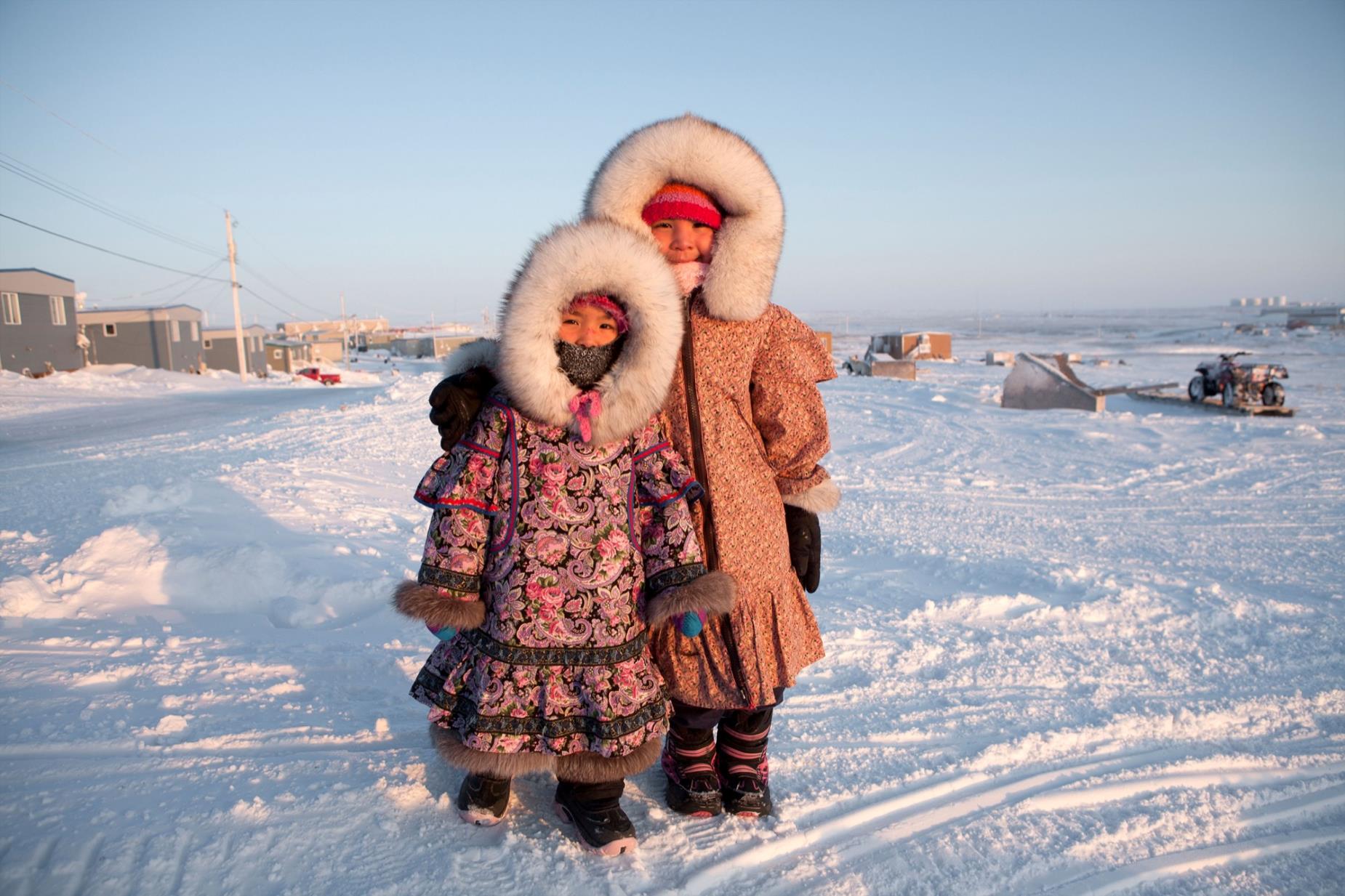
Are you ready to embark on an exciting journey to the Arctic? Get ready to learn about the fascinating Inuit people! In this article, we will explore 19 interesting facts about the Inuit that will captivate the minds of kids. From their rich cultural traditions to their unique way of life in the freezing Arctic regions, the Inuit have a story that is both captivating and inspiring. Discover how they have adapted to thrive in harsh environments, their remarkable hunting skills, their incredible craftsmanship, and the close relationship they have with the natural world. So, grab your warmest coat and join us as we delve into the world of the Inuit!
Key Takeaways:
- The Inuit, also known as Eskimos, have thrived in the Arctic for thousands of years, using their resilience and adaptability to survive in harsh environments. Their rich cultural heritage includes storytelling, throat singing, and traditional hunting techniques.
- The Inuit have a deep connection to nature, with a traditional diet based on locally available resources and a strong belief in harmony with the environment. They have made significant contributions to the arts and continue to preserve their cultural identity despite modern challenges.
The Inuit are indigenous people who have inhabited Arctic regions for thousands of years.
The Inuit, also known as Eskimos, have a rich cultural heritage and have thrived in harsh environments with their resilience and adaptability.
The Inuit have their own distinct language and culture.
The Inuit language, known as Inuktitut, is spoken by various Inuit communities in Arctic regions. Their cultural practices include storytelling, throat singing, and traditional hunting techniques.
The Inuit were skilled hunters and relied on the land and sea for survival.
Traditionally, the Inuit hunted marine mammals such as seals, whales, and walruses. They also hunted land animals like caribou and muskoxen, depending on the region they inhabited.
The Inuit developed ingenious tools and technology.
To adapt to their environment, the Inuit created tools such as the ulu, a versatile knife used for cutting meat and other materials. They also developed kayaks and dogsleds for transportation.
Inuit clothing is designed for extreme weather conditions.
The Inuit wear parkas made from animal fur and skins that provide insulation against the freezing temperatures. They also use boots called kamiit, which are waterproof and lined with fur.
The Inuit have a strong connection to nature and believe in the importance of harmony with the environment.
The Inuit respect the land and animals, considering them essential for their survival. They have deep spiritual beliefs and practices rooted in animism.
The Inuit have a rich storytelling tradition.
Through oral storytelling, the Inuit pass down their history, legends, and moral lessons from one generation to the next. These stories often involve mythical creatures and spirits.
The Inuit have a traditional diet based on locally available resources.
Their diet consists of fish, seal, whale, caribou, and berries. It is a high-protein, high-fat diet that provides the necessary nutrients to withstand the harsh Arctic conditions.
The Inuit have made significant contributions to the arts.
Inuit artists are known for their intricate carvings, sculptures, and prints that depict Arctic wildlife and cultural themes. These artworks are highly prized and sought after worldwide.
The Inuit have a sense of community and practice sharing and cooperation.
Inuit communities traditionally lived in extended family groups and relied on cooperation for survival. They shared resources, skills, and knowledge with one another.
The Inuit have a traditional form of throat singing.
Throat singing is a unique form of musical expression where two performers create harmonic sounds by alternating vocal tones and breath control. It is often performed by Inuit women.
The Inuit have a rich mythology with spirits and supernatural beings.
They believe in various spirits, including the powerful Sedna, who is believed to control the sea creatures. These mythologies are deeply intertwined with their cultural practices.
The Inuit have a strong sense of identity and pride in their heritage.
Despite facing historical challenges, the Inuit have preserved their traditions and continue to celebrate their cultural identity. Their resilience and determination are an inspiration to many.
The Inuit have a deep understanding of the Arctic environment.
Living in close connection with their surroundings, the Inuit have extensive knowledge of weather patterns, ice formations, and animal behavior. This knowledge is critical for their survival.
Inuit communities have unique ways of governance and decision-making.
Traditionally, decisions were made through consensus and consultation with community members. Elders play a crucial role in guiding and advising the community.
The Inuit have a rich tradition of winter festivals and celebrations.
These festivals, such as the annual Inuit Qaumaniqtiit, are marked by traditional games, music, dancing, and feasting. They provide an opportunity for the community to come together and celebrate their culture.
The Inuit have a deep respect for their elders.
Elders are highly revered in the Inuit culture for their wisdom and experience. Their knowledge is passed down to younger generations, ensuring the preservation of traditions.
The Inuit have adapted to modernity while preserving their cultural heritage.
Despite the challenges of the modern world, the Inuit strive to maintain their traditional practices and values. They embrace technology while continuing to honor their roots.
Inuit communities face unique social and environmental challenges.
The rapid changes in the Arctic due to climate change and socio-economic factors pose threats to traditional Inuit ways of life. Efforts are being made to address these challenges and empower Inuit communities.
Conclusion
Learning about the Inuit people can be a fascinating experience for kids. From their unique cultural practices to their adaptation to the harsh Arctic environment, the Inuit have a rich history and way of life. By understanding more about the Inuit, children can develop a deeper appreciation for different cultures and gain knowledge about how people can adapt to their surroundings.
Through these 19 Inuit facts for kids, we have explored various aspects of Inuit life, including their traditional clothing, hunting practices, and language. We have learned about their resilience, resourcefulness, and close connection to nature. The Inuit’s traditional way of life is a testament to the human capacity to adapt and thrive even in the harshest of environments.
By educating children about different cultures like the Inuit, we can foster empathy, respect, and a sense of global awareness. Learning about the Inuit is not only educational but also inspiring, as it shows us the incredible capabilities of humanity and the importance of preserving cultural diversity.
FAQs
Q: Where do the Inuit people live?
A: The Inuit people primarily live in the Arctic regions of Canada, Greenland, and Alaska.
Q: What language do the Inuit people speak?
A: The Inuit people traditionally speak Inuktitut, which is an Inuit language. However, due to cultural assimilation and the influence of other languages, many Inuit people also speak English or French.
Q: How do the Inuit adapt to the cold weather?
A: The Inuit have developed various strategies to adapt to the cold weather, including wearing warm and insulated clothing made from animal skins, constructing well-insulated houses called igloos, and utilizing effective hunting and survival techniques.
Q: What are some traditional Inuit foods?
A: Traditional Inuit foods include fish, seal, whale, caribou, and other marine and land mammals. These foods provide important nutrients and have been a significant part of the Inuit diet for generations.
Q: What are some traditional Inuit games and activities?
A: Traditional Inuit games and activities include throat singing, drum dancing, storytelling, hunting, fishing, and outdoor games like “hand games” and “stick pull.
Was this page helpful?
Our commitment to delivering trustworthy and engaging content is at the heart of what we do. Each fact on our site is contributed by real users like you, bringing a wealth of diverse insights and information. To ensure the highest standards of accuracy and reliability, our dedicated editors meticulously review each submission. This process guarantees that the facts we share are not only fascinating but also credible. Trust in our commitment to quality and authenticity as you explore and learn with us.


